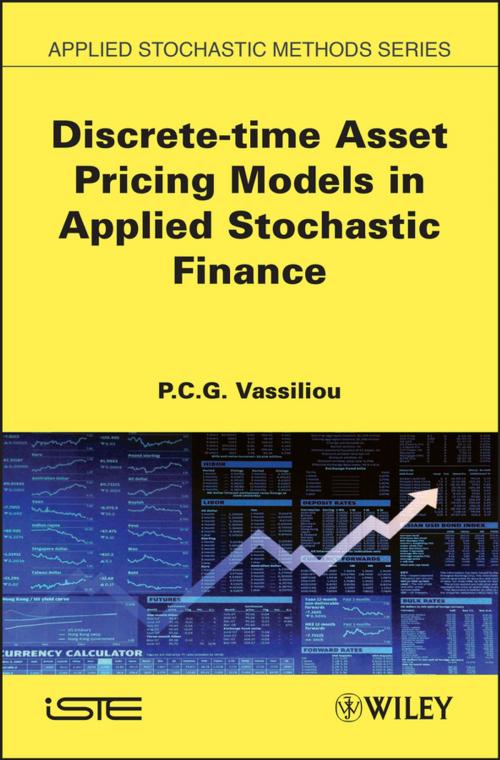Discrete-time Asset Pricing Models in Applied Stochastic Finance
Nonfiction, Science & Nature, Mathematics, Statistics| Author: | P. C. G. Vassiliou | ISBN: | 9781118618660 |
| Publisher: | Wiley | Publication: | March 1, 2013 |
| Imprint: | Wiley-ISTE | Language: | English |
| Author: | P. C. G. Vassiliou |
| ISBN: | 9781118618660 |
| Publisher: | Wiley |
| Publication: | March 1, 2013 |
| Imprint: | Wiley-ISTE |
| Language: | English |
Stochastic finance and financial engineering have been rapidly expanding fields of science over the past four decades, mainly due to the success of sophisticated quantitative methodologies in helping professionals manage financial risks. In recent years, we have witnessed a tremendous acceleration in research efforts aimed at better comprehending, modeling and hedging this kind of risk.
These two volumes aim to provide a foundation course on applied stochastic finance. They are designed for three groups of readers: firstly, students of various backgrounds seeking a core knowledge on the subject of stochastic finance; secondly financial analysts and practitioners in the investment, banking and insurance industries; and finally other professionals who are interested in learning advanced mathematical and stochastic methods, which are basic knowledge in many areas, through finance.
Volume 1 starts with the introduction of the basic financial instruments and the fundamental principles of financial modeling and arbitrage valuation of derivatives. Next, we use the discrete-time binomial model to introduce all relevant concepts. The mathematical simplicity of the binomial model also provides us with the opportunity to introduce and discuss in depth concepts such as conditional expectations and martingales in discrete time. However, we do not expand beyond the needs of the stochastic finance framework. Numerous examples, each highlighted and isolated from the text for easy reference and identification, are included.
The book concludes with the use of the binomial model to introduce interest rate models and the use of the Markov chain model to introduce credit risk. This volume is designed in such a way that, among other uses, makes it useful as an undergraduate course.
Stochastic finance and financial engineering have been rapidly expanding fields of science over the past four decades, mainly due to the success of sophisticated quantitative methodologies in helping professionals manage financial risks. In recent years, we have witnessed a tremendous acceleration in research efforts aimed at better comprehending, modeling and hedging this kind of risk.
These two volumes aim to provide a foundation course on applied stochastic finance. They are designed for three groups of readers: firstly, students of various backgrounds seeking a core knowledge on the subject of stochastic finance; secondly financial analysts and practitioners in the investment, banking and insurance industries; and finally other professionals who are interested in learning advanced mathematical and stochastic methods, which are basic knowledge in many areas, through finance.
Volume 1 starts with the introduction of the basic financial instruments and the fundamental principles of financial modeling and arbitrage valuation of derivatives. Next, we use the discrete-time binomial model to introduce all relevant concepts. The mathematical simplicity of the binomial model also provides us with the opportunity to introduce and discuss in depth concepts such as conditional expectations and martingales in discrete time. However, we do not expand beyond the needs of the stochastic finance framework. Numerous examples, each highlighted and isolated from the text for easy reference and identification, are included.
The book concludes with the use of the binomial model to introduce interest rate models and the use of the Markov chain model to introduce credit risk. This volume is designed in such a way that, among other uses, makes it useful as an undergraduate course.















